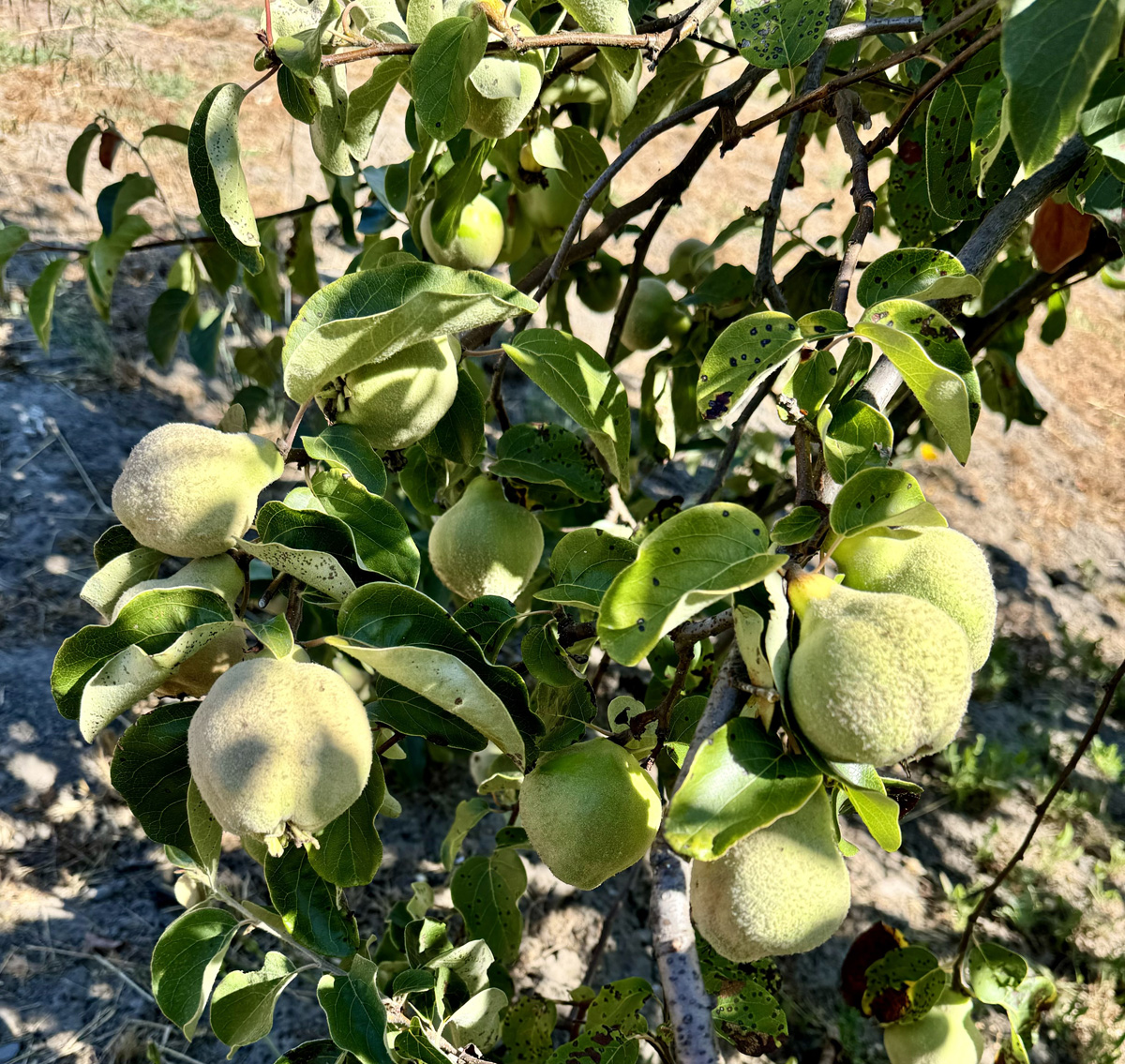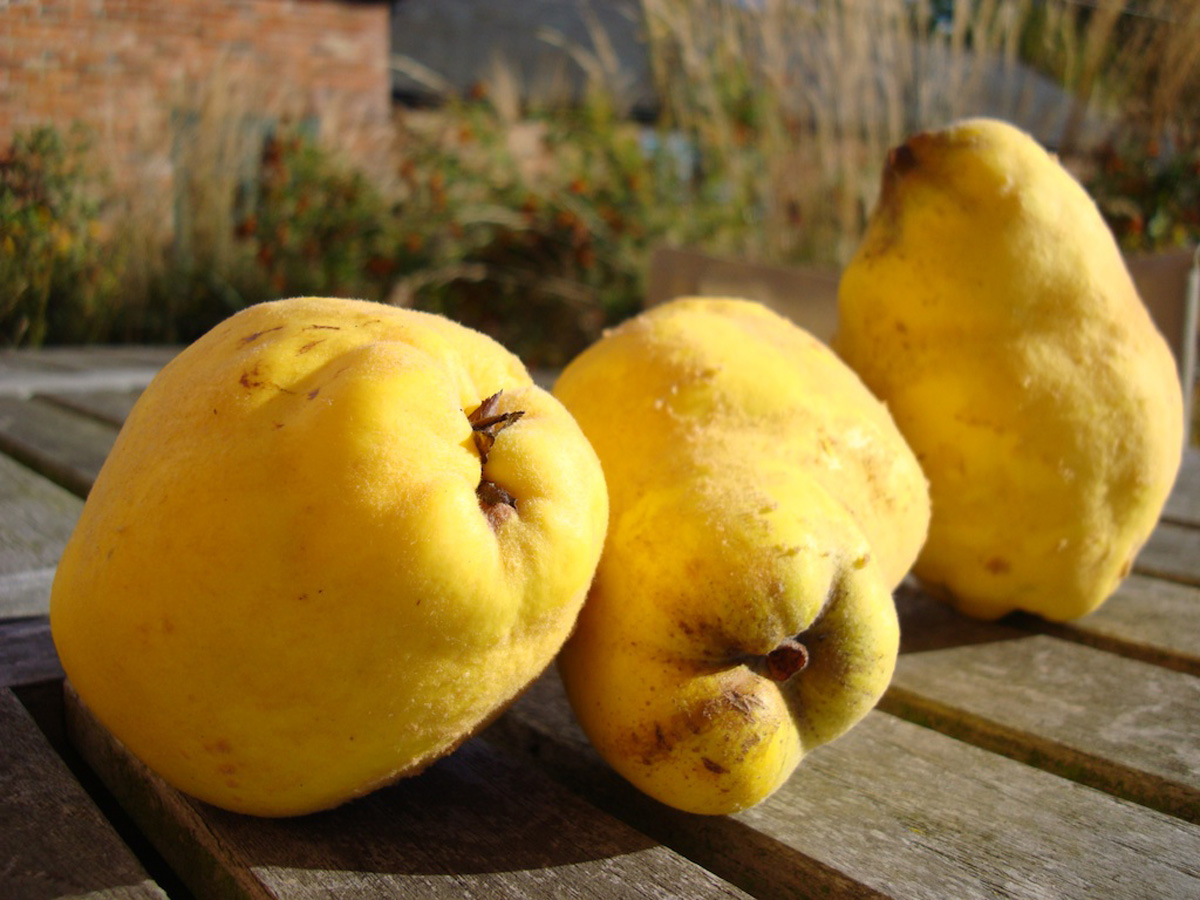The topic of fruiting quince came up the other day when a friend shared just how productive his tree was shaping up to be this year. Everyone present enthusiastically chimed in with our own quince experiences, memories, and recipes. We all appeared to have had a grandmother with a quince growing in her garden, who would use the fall-gathered fruit for cooking, jellies, jams, to add oomph to apple pies and ciders, and for medicinal—sometimes even alcoholic—purposes! Though most varieties of quince need to be cooked to be enjoyed in our particular climate zone and are firm and astringent at harvest time, this fruit has an avid fan club and is adored for many reasons.
Quince Tree Facts
Name: Cydonia oblonga and cvs.
Zones: 5–8
Size: 12 to 15 feet tall and 9 to 12 feet wide
Conditions: Full sun to partial shade; moist, well-drained soil
Native range: Rocky slopes and woodland margins in the Transcaucasus region
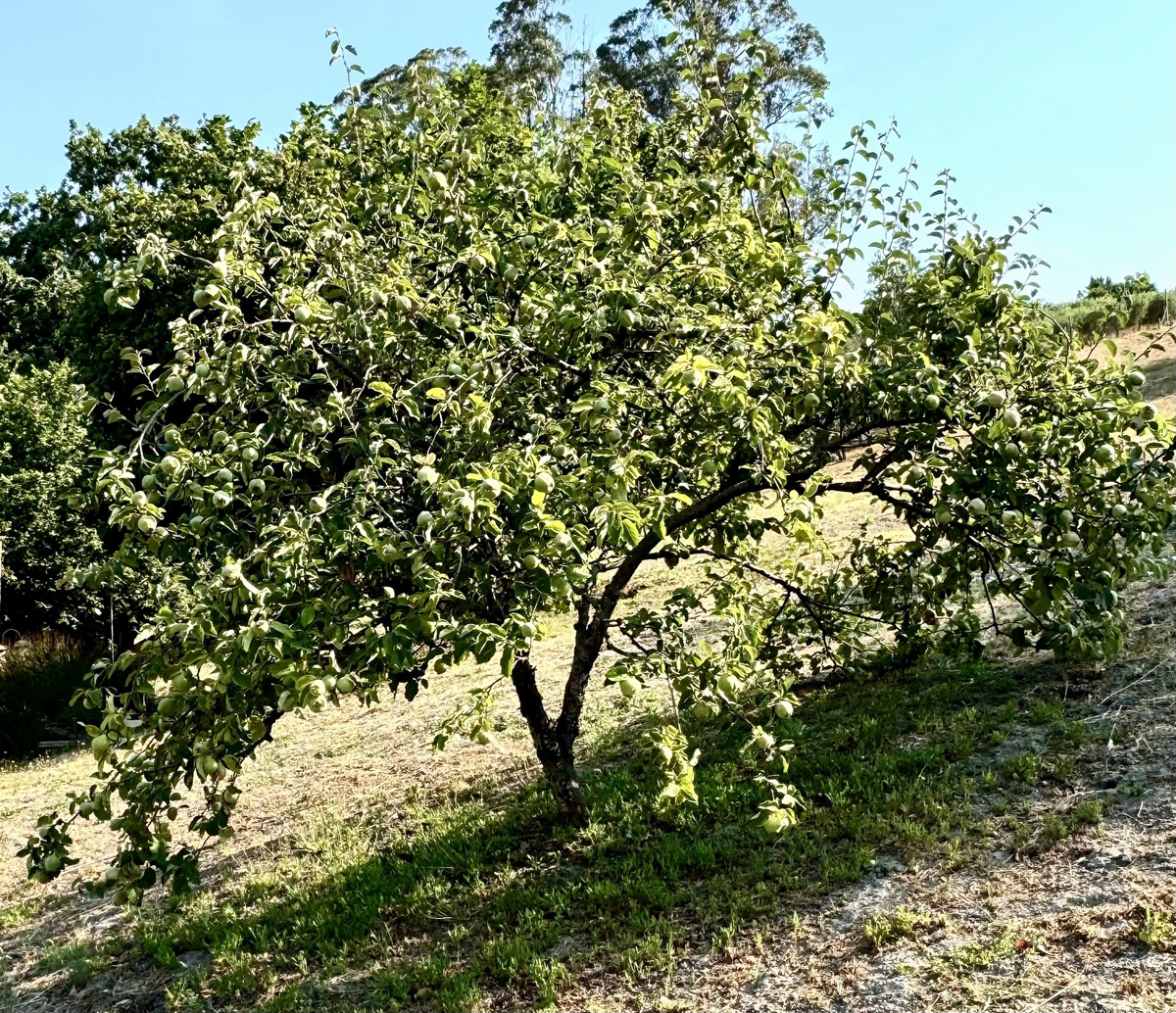
Quince trees have a long and storied history
The rich history of this venerable fruit is remarkable and worthy of admiration all by itself. According to historical records, it was cultivated in ancient Mesopotamia 4,000 years ago and was mentioned in the Quran, Greek mythology, and even the Bible. The trees are propagated easily from seeds. The seeds were carried west by Persian traders to Greece, Rome, Spain, and beyond as early as 700 BC. They were brought eastward to China right around the same time, eventually arriving in North America along with early settlers in the 1600s. Because it has been prized for its unique characteristics for as long as anyone can remember and is still grown and loved today, quince may well be the original heirloom fruit.
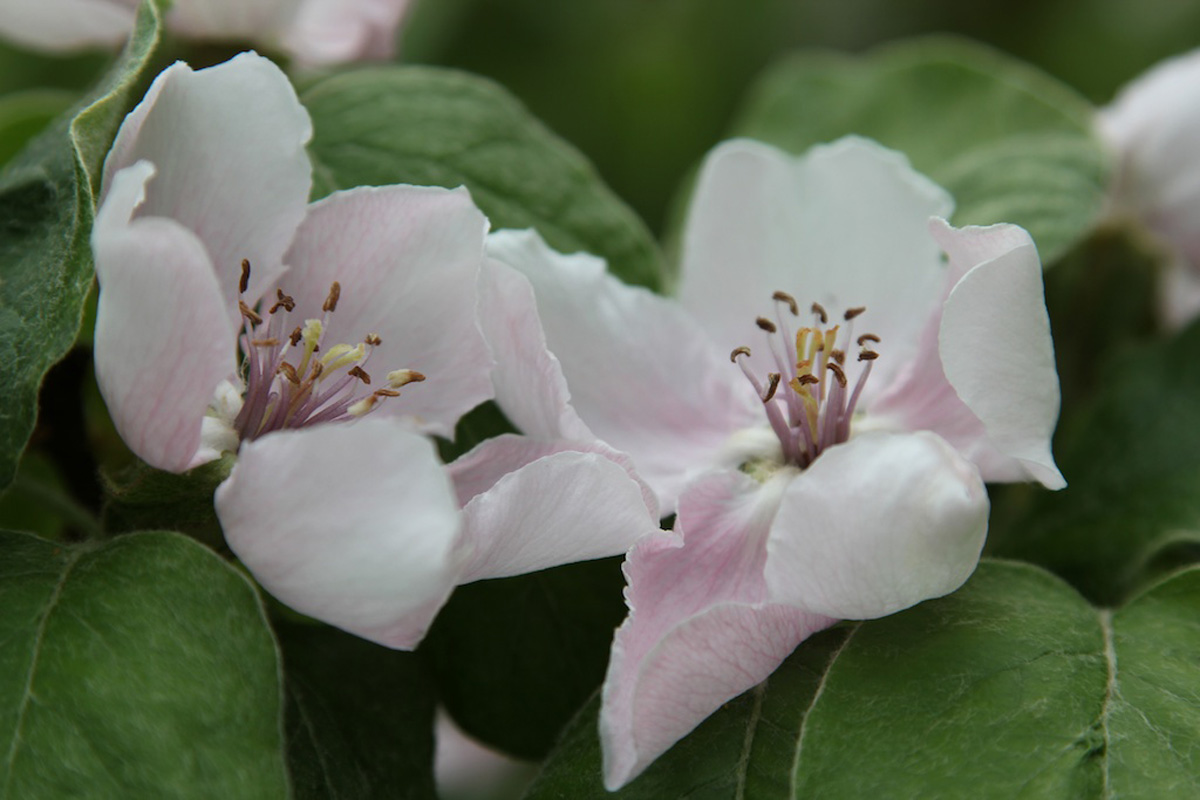
Attractive blooms and mouthwatering fruit make quince a choice garden plant
Quince is treasured for its resilience, ruggedness, drought tolerance, and vigor. This small tree positively shines in late spring when smothered in its big, showy, pink-blushed ivory blossoms. But what has made the quince most popular over the years is the dimpled, fuzzy fruit’s intoxicating, heady, floral fragrance (it was even used as an air freshener in ancient times) and its deliciously unique flavor profile. The ripe fruit is highly prized by the most discerning foodies.
The fruit itself is hard, fuzzy, and oddly shaped. They loosely resemble a cross between an apple and a lumpy pear. The orbs grow on an attractive, multi-branched, bushy tree, ripening to a rich golden yellow in late fall. In temperate climates such as ours, most quince varieties produce fruit that remains hard and astringent, even when fully ripe, and must be cooked to consume.
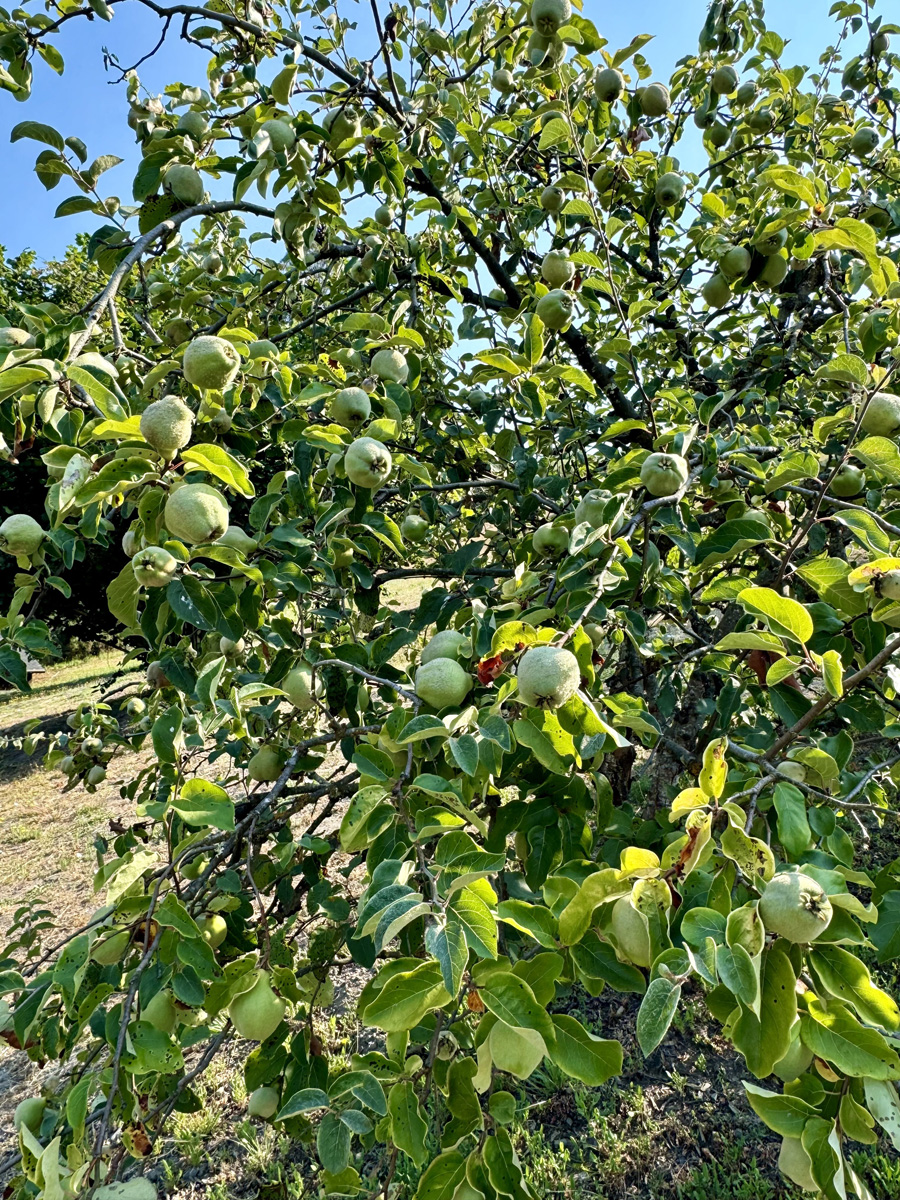
How to select the right quince variety
When choosing a quince variety best suited for our area, you have to take cold hardiness, disease resistance (to avert potential fungal problems), and of course fruit quality into account. ‘Pineapple’ and ‘Smyrna’ are both ideal choices for all Pacific Northwest quince lovers. Well-suited to our cooler, sometimes foggy summers, and with longer chill requirements compared to others, either of these cultivars are a fabulous choice. They are famous for their showy big blossoms, larger fruit size, aromatic fragrance, and sweet/rich fruit flavor when cooked. Quince trees are easy to grow. To begin with, every variety is self-fertile, meaning an individual tree has all the flower parts necessary to ensure abundant fruit production.
Quince Growing Tips
The following offers some basic tips and tricks for successfully growing quince in your backyard and best practices for harvesting tons of fruit.
- Exposure: For the happiest quince trees, provide full sun and great air circulation. These conditions help keep fungal problems at bay.
- Soil: Rich, amended, well-draining soil is recommended when planting your new quince tree, with gopher caging vital if those pesky critters are an issue in your garden.
- Watering: Quince trees require regular irrigation until fully established, with extra water during hot and dry periods. Water deeply to encourage deep root growth. Once the tree is fully mature, a quince is surprisingly drought tolerant.
- Fertilizing: Fertilize with a well-balanced fertilizer in spring to promote healthy growth. Quinces also appreciate a 3-inch layer of well-aged compost mulching their roots in late fall.
- Pruning: Prune the tree in late winter or early spring to shape, and remove any damaged, dead, or diseased branches at the same time.
- Pests: Gophers, voles, deer, and bunnies can all cause trouble, so protect as needed. Keep an eye out for aphids and scale during the growing season and treat organically as possible.
- Diseases: Bacterial fire blight can be a scourge. Watch for signs (it will appear like someone took a blowtorch to the branch ends) and treat with an organic product if spotted. Black spot, rust, and apple scab are fungal problems that can also affect quince. Treat with an organic fungal spray at the first sign of trouble.
- Harvesting: The oddly shaped fruit ripens gradually to a rich, lush, glowing yellow in fall. Though it’s tempting to harvest immediately, it should be left on the tree as long as possible to allow the flavor and perfume to fully develop. Quince can be stored for up to three months in a cool, dark place. But be careful to store them separately from other fruit, as the intoxicating aroma will permeate any other fruit stored nearby. Cooking the fruit will help sweeten the flesh to perfection.
And to discuss these plants or ask other gardening questions, chat with the author on the Gardening Answers forum.
To read more on Pacific Northwest gardening, go here.
Photos: Fionuala Campion unless otherwise noted
—Fionuala Campion is the owner and manager of Cottage Gardens of Petaluma, in Petaluma, California.
